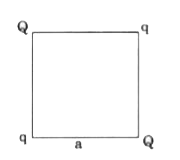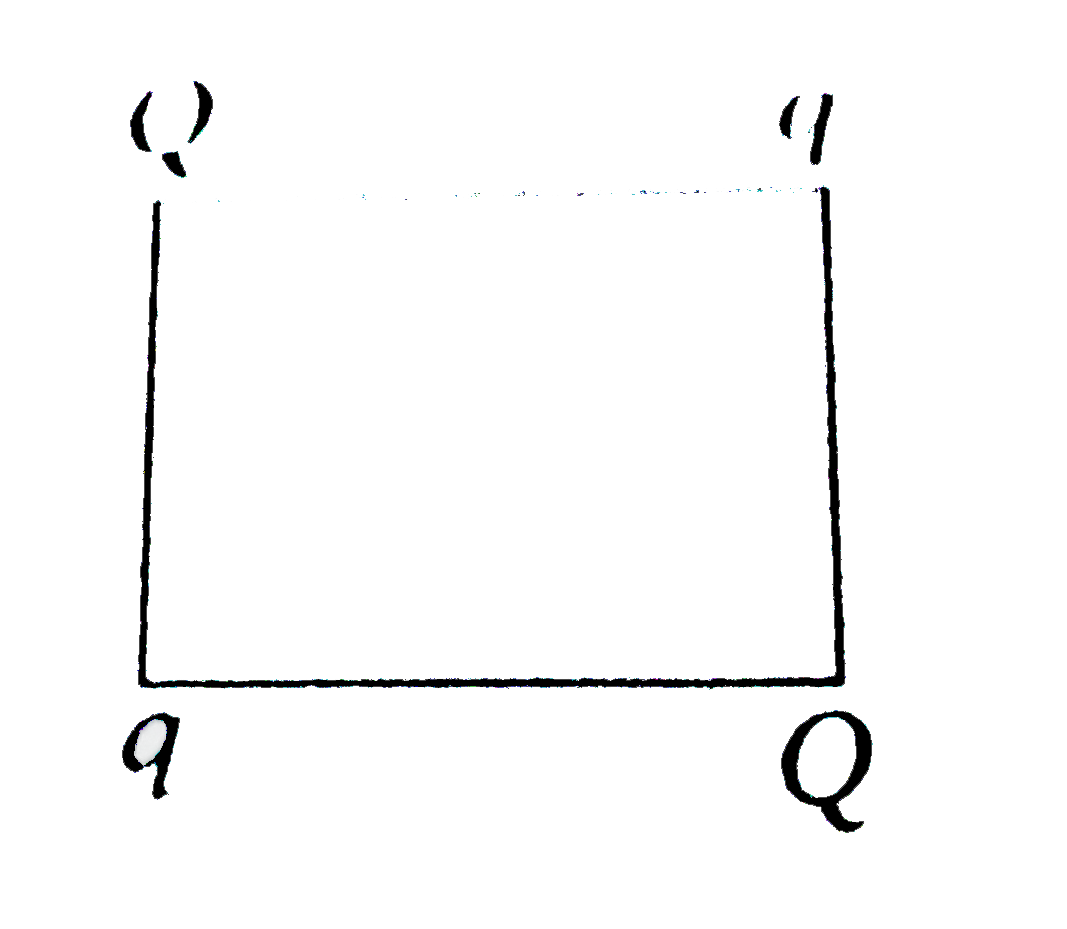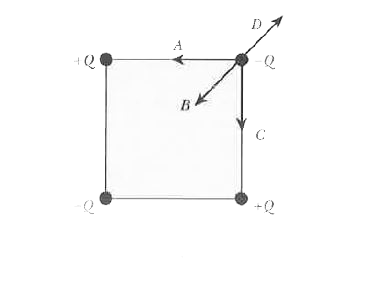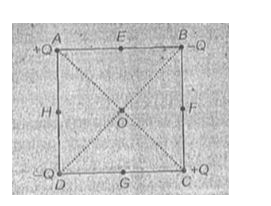Four point charges, two positive and two negative, are fixed in position at the corners of a square, as shown below

Which one of the following arrows best illustrates the total electrostatic force on the charge in the lower right-hand corner of the square?




The correct Answer is:A
By the principle of superposition, the total electric force on the charge in the lower right-hand corner is simply the sum of the individual electric forces produced by each of the charges in the other three corners. The first diagram below shows the directions of the individual electric forces that each of the other three charges exerts separately on the lower right-hand charge. the second and third diagrams then show how these three vectors add together to give the net electric force.
 .
.
Note that F2andF3 are each larger than F1 since FE=k|q1q2|r2. therefore, F2+F3 is also larger than F1.
Topper's Solved these Questions
Similar Questions
Four point charges Q.q Q and q are placed at the corners of a square side 'a' as shown in the figures.

Find the resultant electric force on a charge Q,
View SolutionFour charge Q,q,Q and q are kept at the four corners of a square as shown below. What is the relation between Q and q, so that the net force on a charge q is zero ?

View Solution
Knowledge Check
There are four charges, each with a magnitude of 2.0μC. Two are positive and two are negative. The charges are fixed to the corners of a 0.30 m square, one to a corner, in such a way that the net force on any charge is directed toward the center of the square. Find the magnitude of the net electrostatic force experienced by any charge.
A0.20 NB0.57 NC0.37 ND0.16 NFour point charges, each of the same magnitude, with varying signs are arranged at the corners of square as shown in the figure below. Which of the arrows labelled A, B, C and D gives the correct direction of the net force that acts on the charge at the upper right corner ?
 AABBCCDD
AABBCCDDFour charges Q-Q, Q-Q are placed at the corners of a square as shown . The potential is zero at points
 AE,F,G,H,OBE,O,G onlyCH,O,F onlyDO only
AE,F,G,H,OBE,O,G onlyCH,O,F onlyDO only
Four charge Q,q,Q and q are kept at the four corners of a square as shown below. What is the relation between Q and q, so that the net force on a charge q is zero ?

View SolutionFour point charges Q , q Q and q are placed at the corners of a square of side 'a' as shown in the Fig. Find the
resultant electric force on a charge Q
View SolutionFour point charges are placed at the corners of a square of side l. Calculate potential at the centre of square.

View SolutionFour point charges are placed at the corners of a square of side l. Calculate potential at the centre of square.

View SolutionA charge +q is fixed to each of three corners of a square .On the empty corner a charge Q is placed such that there is no net electrostatic force acting on the diagonally opposite charge then
View Solution
